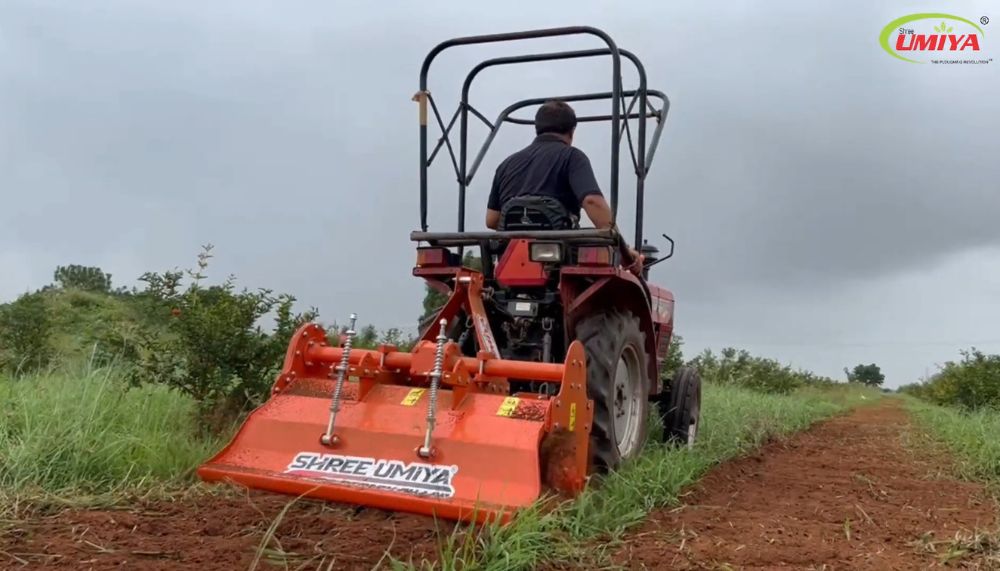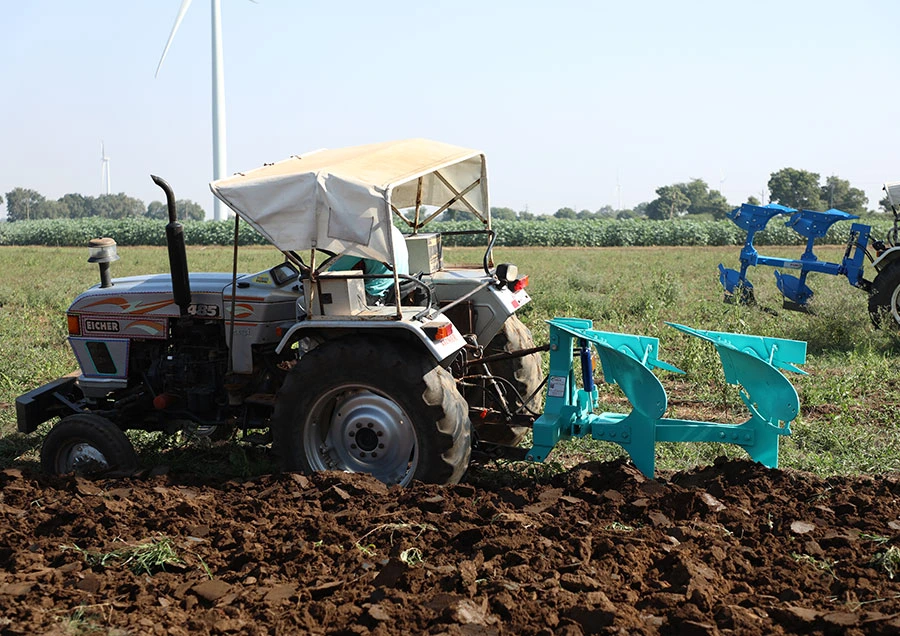Chat With Us
+91 99253 37969How To Maximize The Effectiveness Of Rotary Tiller In Tough Soil?

Dealing with tough soil is just like wrestling against a brick wall. Thus, powerful rotary tillers are generally used to tackle tough soil. But without a proper method, it can be difficult. One can damage the soil, and the machine, and even ruin the whole soil preparation process.
Therefore, here we have brought you some super saver tips that will help you maximize the efficiency of the rotary tiller in tough soil.
9 Tips To Maximize The Efficiency Of Rotary Tiller In Tough Soil
1. Selecting The Right Rotary Tiller
The very first step is to choose the right rotary tiller for tough soil. Different types of soils have specific requirements, hence selecting a tiller with robust mechanism and adjustment features is necessary.
For example, rotary tillers of 7 to 10 horse power are recommended for tough soil farming. Highly durable blades and a powerful gearbox is vital for maximizing efficiency of the tiller in tough soil.
2. Preparing The Soil Before Tilling
Understanding the soil is the key to maximize yield and productivity. Therefore, inspect the soil thoroughly before starting tilling. By inspecting the soil, you can do necessary adjustments before grinding and leveling the soil.
For example, if the surface is excessively dry, watering the area can help in a smooth penetration and makes the job easier for a rotary tiller. Similarly, you should avoid using a tiller in an excessive wet condition, as it can lead to clumping.
3. Adjustments Of The Tilling Depth
After adjustments in the soil conditions, it is now time to prepare the tiller according to the soil. You can't just directly start penetrating with maximum power. It will ruin the humus containing surface and damage nutrient rich top soil. So what to do?
Well, you should start tilling with a shallow tilling depth and then gradually increase it by the help of a depth gauge understanding the pulse of soil. This will lead to a smooth penetration and maximize rotary tiller efficiency without wasting energy.
4. Maintain Sharp Tines
Sharp tines are vital in ensuring the perfect granulation of tough soil. Blades with rust and debris can potentially hinder the tilling process. Poorly maintained blades can be clogged during deep tilling.
Thus, scheduled maintenance and sharpening of blades is an utmost requirement. Inspect from cracks or wear on the blade before start tilling and replace the blades if you have found severe damages.
5. Optimize Tilling Speed
Rushing the process can ruin the surface, therefore maintaining an optimized speed is necessary for uniform and effective soil cutting. If you go too fast with the tiller, it will result in incomplete soil churning and increase strain on the machine. So it's better if you continue with a slower forward speed while maintaining the optimal power take-off speed for effective results.
6. Using Counter Rotating Tiles
In dry areas, turning around compact soil layers is a bit difficult and requires much more attention in comparison to clay and sandy soil. To make the job easier, you can use counter rotating blades.
When the tiller moves forward, the tiller rotate mirroring each other, providing the extra thrust and power. It can effectively penetrate clay-heavy compact soil structures without causing potential damage to the rotary tiller.
7. Avoid Overloading The Tiller
If you want an evenly leveled surface and higher productivity, then you must know, you can't achieve it in one-pass. Overloading the tiller especially in tough soil can result in potential damage to the tines, gearbox, engine and the soil surface as well.
Therefore, you should learn to work in proper sections. Divide the area into smaller units and use the tiller wisely for better and timely output. This is how you can avoid damage to the tiller and complete your task effectively without losing time.
8. Maintain Proper Weight Distribution
You might not know, but weight distribution is a critical factor in soil preparation using a rotary tiller. Proper weight distribution provides maximum downward force, helping blades in penetrating the soil more smoothly and thoroughly.
Uneven distribution of weight can result in imbalance and make the machine sink in the soil. You can use attachments to balance the weight and improve the performance of the rotary tiller.
9. Practice Regular Maintenance
Last but not the least, proper and regular maintenance of rotary tiller is important for successfully following effective tillage practices. Make sure to regularly check the engine and gearbox.
Clean and sharpen the blades before beginning with the tillage activities. Ensure to replace the damaged tines and attachments before going into the field.
Wrap Up
In summary, you can effectively maximize productivity by using a rotary tiller in tough soil with the above tiller and soil preparation tips. Starting from the selection of the tiller to timely maintenance, each step is important for a smooth soil preparation.
Select from a precise range of rotary tillers with Patel Agro Industries and give a boost to the soil preparation process. Explore our product range now.








